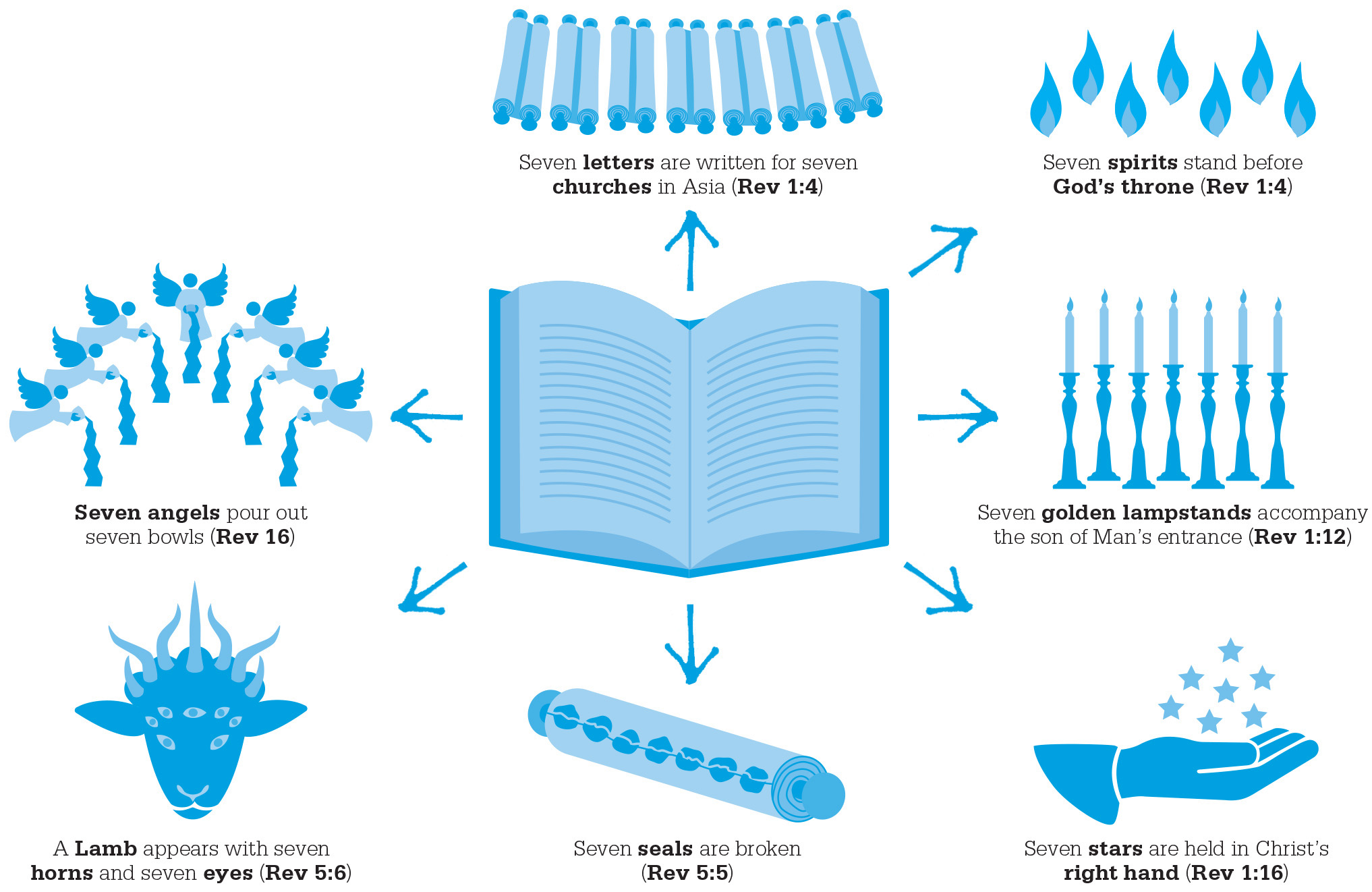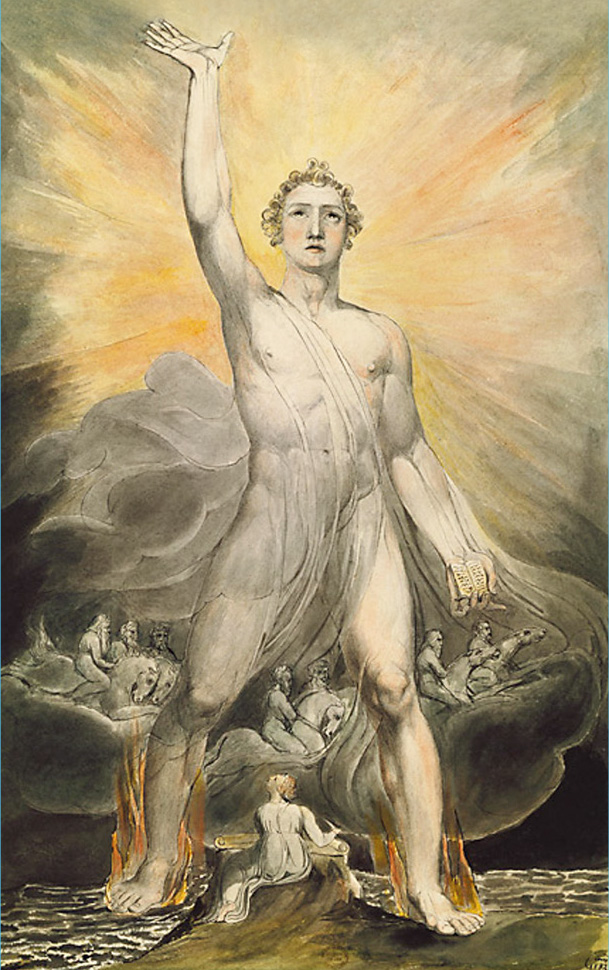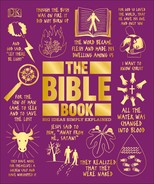
IN BRIEF
Revelation 1:1–20:15
Justice for all
God’s heavenly throne room. An unspecified future time.
Jesus The key figure in the Final Judgment, described alternately as “the Son of Man,” “the lamb on the throne,” and “the First and the Last.”
All humanity All people, who ever lived, from all nations and all times.
John the Seer The author of Revelation, who sees the events described in a vision.
The Greek word used in the book of Revelation for judgment originally meant “to sift,” and from there it came to mean choosing right from wrong. It essentially means that each human life will be examined according to God’s standards and sorted into what is acceptable and what is not. However, unlike today’s conception of judgment, which calls for justice here and now, in the first century CE people believed in an impending judgment. For many in the Greek and Roman worlds, this was at the end of their earthly life, at the point of death. Christians, however, building on Jewish beliefs, looked toward a future, Final Judgment in which all people of all places and times would need to give an account of their lives before God.
In the Old Testament, this future judgment is called “the Day of the Lord.” In one of the prophet Daniel’s visions, he sees a picture of God’s throne room, where God sits ready to judge the world. Many beasts try to establish their rule over the world, but then, at the climax of the vision, Daniel sees “one like a Son of Man”—a clear reference to the name Jesus takes throughout His ministry—approach God’s throne. God then gives Jesus the authority and power to bring the Final Judgment to the world.

“Therefore keep watch, because you do not know on what day your Lord will come.”
Matthew 24:42
Royal return
At Jesus’s ascension, the Apostles were told that “this same Jesus … will come back in the same way you have seen him go into heaven” (Acts 1:11), which is thought to mean that Jesus will return bodily on earth one day. The image of a king arriving to bring judgment was familiar in the Roman world, where an emperor occasionally visited key cities to hold court—he would punish his enemies and reward his friends. The Greek word for this is parousia, which means “coming,” and early Christians understood Jesus’s return as the coming of God’s appointed king.
Jesus says that the criteria for the Final Judgment will henceforth be whether people trust Him as a savior: “If anyone is ashamed of me and my words … the Son of Man will be ashamed of him when He comes in His Father’s glory with the holy angels” (Mark 8:38).
Many of Jesus’s parables speak about a coming Final Judgment. He explains in one parable that the weeds will be burned by fire, while the good crop will be harvested into God’s barn. Whereas the crops and the weeds grow side by side in the present, one day each will become distinct when Jesus makes His judgment (Matthew 13:24–30). In another parable, Jesus speaks of His role in the coming Final Judgment as being like that of a shepherd separating sheep from goats (Matthew 25:31–46).

“He will judge the world … by the man He has appointed. He has given proof … by raising [Jesus] from the dead.”
Acts 17:31
Signs and symbols
John’s visions, recounted in the book of Revelation, paint a dramatic picture of the Final Judgment. They begin in the throne room of heaven, where all the heavenly creatures are preparing for the scroll containing God’s final order for the world to be opened. At first, the creatures cannot find anyone who is worthy to open the seven seals that keep the scroll rolled. Then, however, John sees a lamb that looks like it has been sacrificed, standing alive on the throne: a clear reference to Jesus. As this lamb takes the scroll, all of heaven sings with joy, “You are worthy to take the scroll and to open its seals” (Revelation 5:9).
Out of the first four seals ride the “horsemen of the apocalypse,” one of Revelation’s most enduring images. The riders are atop a white horse, a red horse, a black horse, and a pale horse, representing conquest, war, famine, and death (6:1–8). The four horsemen are traditionally viewed as harbingers of the imminent Final Judgment.
John the Seer

The author of Revelation identifies himself as Jesus’s “servant John” (Revelation 1:1). Since the second century, it has been suggested that this John is the same as Jesus’s disciple John, brother of James and author of the Gospel and three epistles that bear his name. However, even from the third century CE, Bible scholars have argued that there is such a difference in style between Revelation and the other writings that it is unlikely they could have come from the same author.
Whoever he was, this “servant John” wrote down his visions toward the end of the first century CE while on the island of Patmos, off the coast of present-day Turkey. John writes that he is on the island “because of the word of God and the testimony of Jesus”; scholars therefore believe that he was living in exile, and see this as further proof that authorities were already starting to persecute Christians as troublemakers.
Evil destroyed
The events described after this are complex—John’s intention does not seem to be to describe his visions in a logical order, but rather to remind Christians of the finality of the approaching judgment.
Revelation 6–18 cover a series of vignettes in which John witnesses different symbolic judgments. One of the most well-known scenes in John’s account is the Battle of Armageddon, “the Day of the Lord.” The word “Armageddon” is used only once in the Bible, and it is thought to come from the word har, meaning mountain, and Megiddo. Mount Megiddo was the site of Old Testament battles, such as Deborah and Barak’s victory against the Canaanites. Whether this location is intended to be literal or symbolic, it ties the final battle of humanity to early wars fought by the Israelites.
In the final battle, all the “kings of the whole world” (Revelation 16:14) gather at Armageddon. They are influenced by Satan, and bring their armies to fight with God for control of the earth. God, on the other hand, calls on Jesus to return. There, the Son of God strikes back at those willing to go to war with Him. John describes how “Coming out of His mouth is a sharp sword with which to strike down the nations” (Revelation 19:15); Jesus thus destroys the evil enemies of God, leaving only good behind. With evil vanquished, God appoints Jesus to replace existing systems of governance and rule over the newly established Kingdom of God. This sets the scene for the Final Judgment itself. As the climax of John’s vision draws near, in Revelation 19–20, he sees a great white throne, in front of which is a vast crowd of all of the people who have ever lived. Jesus then opens the “book of life,” and every person is judged “according to what they [have] done” (20:12). Those whose names are in the book of life are welcomed into God’s new creation; those whose names are absent are thrown into a lake of fire, the final hell, where “death and Hades” (the underground world of the dead) are also thrown (20:14–15).
“You know very well that the day of the Lord will come like a thief in the night.”
1 Thessalonians 5:2


Humanity on trial
The Final Judgment is a crucial motivation for the holiness and mission of Christians. Although Christians are assured that they will be considered acceptable by God on the “Day of the Lord” simply because of their trust in Jesus—this is called “justification,” meaning that they are judged to be righteous because Jesus has died for their sins and has cleaned their record before God—they will still be exposed to God’s judgment of their deeds. Paul writes that on “the day” fire will test each person’s “foundation,” which will reveal its quality, whether it was made from “gold, silver, costly stones, wood, hay, or straw.” When this fire comes, if “what he has built survives,” Paul writes, “he will receive his reward” (1 Corinthians 3:12–14). Paul thus teaches that some will pass through judgment with nothing, while others will be rewarded for their faithful lives.
This impending judgment also promotes urgency in the missionary task. Jesus tells His disciples to be ready: His parousia may occur at any moment (Mark 13:33). As Peter says, “the Day of the Lord will come like a thief” (2 Peter 3:10). Because of this, Jesus’s great commission to His disciples is all the more urgent. God does not want anyone to go to hell, but wants all to have the chance of eternal salvation.
“God is just: He will pay back trouble to those who trouble you and give relief to you who are troubled.”
2 Thessalonians 1:6-7
Revelation as a letter to early Christians

The book of Revelation was written to a number of early Christian congregations who were facing the threat of persecution. Although seven churches are mentioned in the early chapters—those in Ephesus, Smyrna, Pergamum, Thyatira, Sardis, Philadelphia, and Laodicea—the book of Revelation became important in encouraging all Christians.
The language of the book relies heavily on symbolism, and the recurring mentions of “Babylon,” Israel’s ancient enemy, are a veiled reference to the Roman Empire, which was putting increasing pressure on early Christians, because of their refusal to worship the emperor. Through its colorful language and dramatic visions, the Book of Revelation is a pastoral letter that seeks to encourage Christians to keep faith in the face of persecution, for regardless of the horrors of history, the risen Jesus remains the world’s ultimate King, and faith in Him as savior and Lord is the sole criteria for salvation from eternal condemnation at the Final Judgment.
See also: The Prophet Ezekiel • Daniel in Babylon • Call for Repentance • The New Jerusalem
